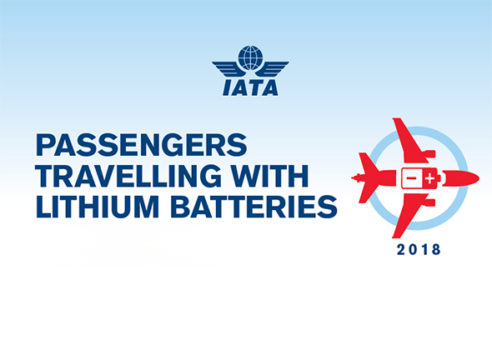The International Air Transport Association (IATA) today published their guidelines for passengers traveling with lithium batteries and devices that contain lithium batteries. Please download and refer to their full guide here: LithiumBatteryPassengers_March 2018. Some highlights: Effective March, 2018 These rules are already in effect as of March. The guide covers topics like: Types of batteries and when…
Hazmat hopes: A 2018 wish list from top Dangerous Goods professionals
Last November, we asked our readers a simple question: What’s your biggest wish for 2018 in the entire Dangerous Goods galaxy? What regulation would you change? What stress-inducing process would you simplify? What one thing would you change to make your job easier—and the world safer? DG pros from all over responded, with wishes ranging…
Fall meetings highlight changes in Dangerous Goods air transport
The fall season in odd-numbered years has traditionally been a busy time for people who handle Dangerous Goods by air, and 2017 was no exception. Consider this timetable: Labelmaster’s 12th Dangerous Goods Symposium, Chicago, Sept. 6–8 IATA’s Dangerous Goods Board, 111th meeting in Brussels, Sept. 18–21 IATA’s Lithium Battery Seminar in Barcelona, Oct. 3–5 ICAO’s…
Report from Geneva: The UN Sub-Committee on lithium batteries and label specifications
New people join the ranks of Dangerous Goods professionals every day—in many cases, with little or no preparation. Perhaps their first introduction is a well-thumbed copy of Labelmaster’s MasterRegs version of 49 CFR, along with the orange-colored volumes of the United Nations Model Regulations on the Transport of Dangerous Goods (UNMR). The UNMR is the…
Lithium batteries (what else?) dominate talks at IATA Dangerous Goods Board
As a bridge between the developers and the users of Dangerous Goods regulations, Labelmaster strives to understand the needs of both the regulated industries and the regulators. This way, we can provide the optimum solutions for our customers. And, since we closely follow the discussions and decisions of both industry and regulators, it will come as…
A Letter from Bangkok on the 109th Meeting of the IATA Dangerous Goods Board
A ship in harbor is safe, but that is not what ships are built for. – John A. Shedd (Salt from My Attic, 1928) A not so old adage that captures the balance between safety and action. A 21st century version might be “An airplane is safe in its hangar, but that’s not what…
Lithium battery enforcement: A level playing field will boost safety immediately
Neil McCulloch contributed to this article. Monday’s press release from IATA, highlighting the problems and implications of non-enforcement of existing lithium battery shipping regulations, is both salutary and discouraging. Salutary, because we’ve long been on record as saying that comprehensive enforcement of existing regulations would have a larger impact on safety than enacting new regulations. Many other…
Changes to 58th Edition of the IATA DGR – A Synopsis
In late July, the International Aviation Transport Association (IATA) released a summary document in reference to the changes that will appear in the 58th edition of their Dangerous Goods Regulations (IATA DGR). This edition will become effective on January 1st, 2017. While many changes are of a minor or administrative nature, a number of significant…
How will Brexit affect Dangerous Goods transport for the UK and Europe?
Like several of my Labelmaster colleagues, I’m an accredited DGSA, from DGAC’s SQA affiliated training program (No one can say Dangerous Goods is short of acronyms!) and hence well versed in the ADR. What those acronyms mean is that I’m somewhat knowledgeable about European Dangerous Goods regulations as they are applied in Great Britain. As…
In Geneva, UN Dangerous Goods Experts Hash Out Coming Regulatory Changes
The structure of the Hazardous Materials Regulations (HMR) in the US 49 CFR Parts 100 – 185 may seem byzantine at first; it’s hardly light reading. However, it is actually built upon a very sound and logical structure. US regulations are in large part based on and or harmonized to the Dangerous Goods regulations (it’s…









